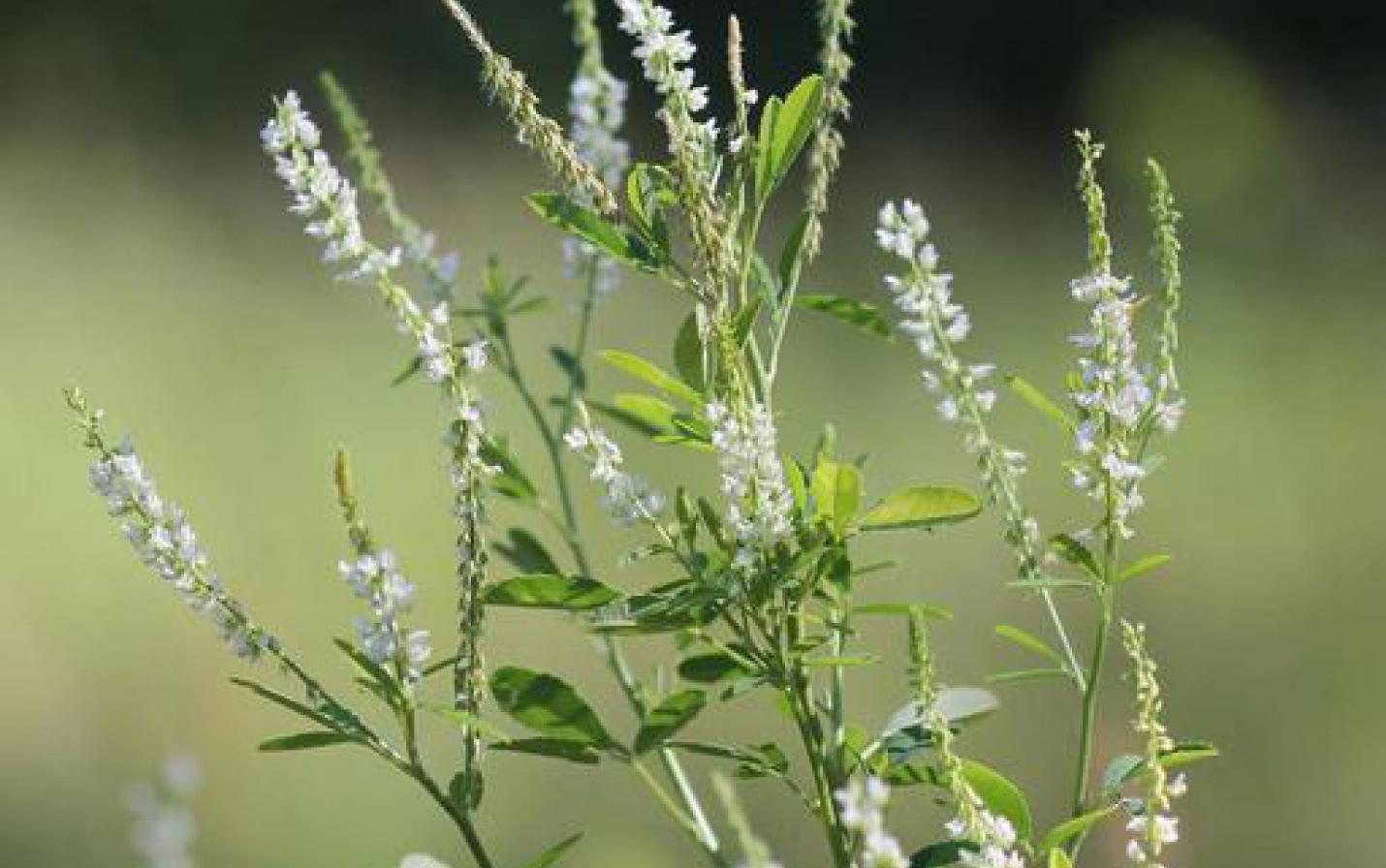
The Conservancy's field crew has been busy these last few weeks of June and into early July working to combat an invasive specie that threatens our native prairie remnants and plantings – sweet clover.
White and yellow sweet clover is an invasive biennial specie that lies in wait the first year that it grows (typically 4-6 inches in height), then the second year of growth explodes into a fibrous stem with multiple branches reaching 6ft in height and 2-3ft wide. Sweet clover gets a foot hold in a disturbed area (common in prairie plantings) and readily out-competes native vegetation with its aggressive growth.
Sweet clover was first introduced into the United States by agriculture and bee keepers as the plant is a good food source for cattle and honey bees alike. A study of sweet clover’s effect on prairie plantings in western Minnesota showed that one year after burning and inter-seeding with native prairie species, sweet clover reduced the establishment of native wildflowers (forbs) and resulted in a less diverse prairie planting.
Although sweet clover can be a problem in native prairie plantings, the Conservancy’s crew is working to remove the invasive plant from remnant bluff prairies. These small pockets of prairies on south and southwest facing slopes are a priority for restoration and maintenance because they are the last true examples that we have of the widespread prairies that occurred in our area long ago. These prairies are also among the most ecologically diverse and rapidly declining habitats that we have here in the Driftless Area, and protecting them is essential for the other species that depend upon them. So if you see sweet clover in your prairie remnant, the time to act is now!
Photo courtesy of Bob Routledge, Sault College, Bugwood.org